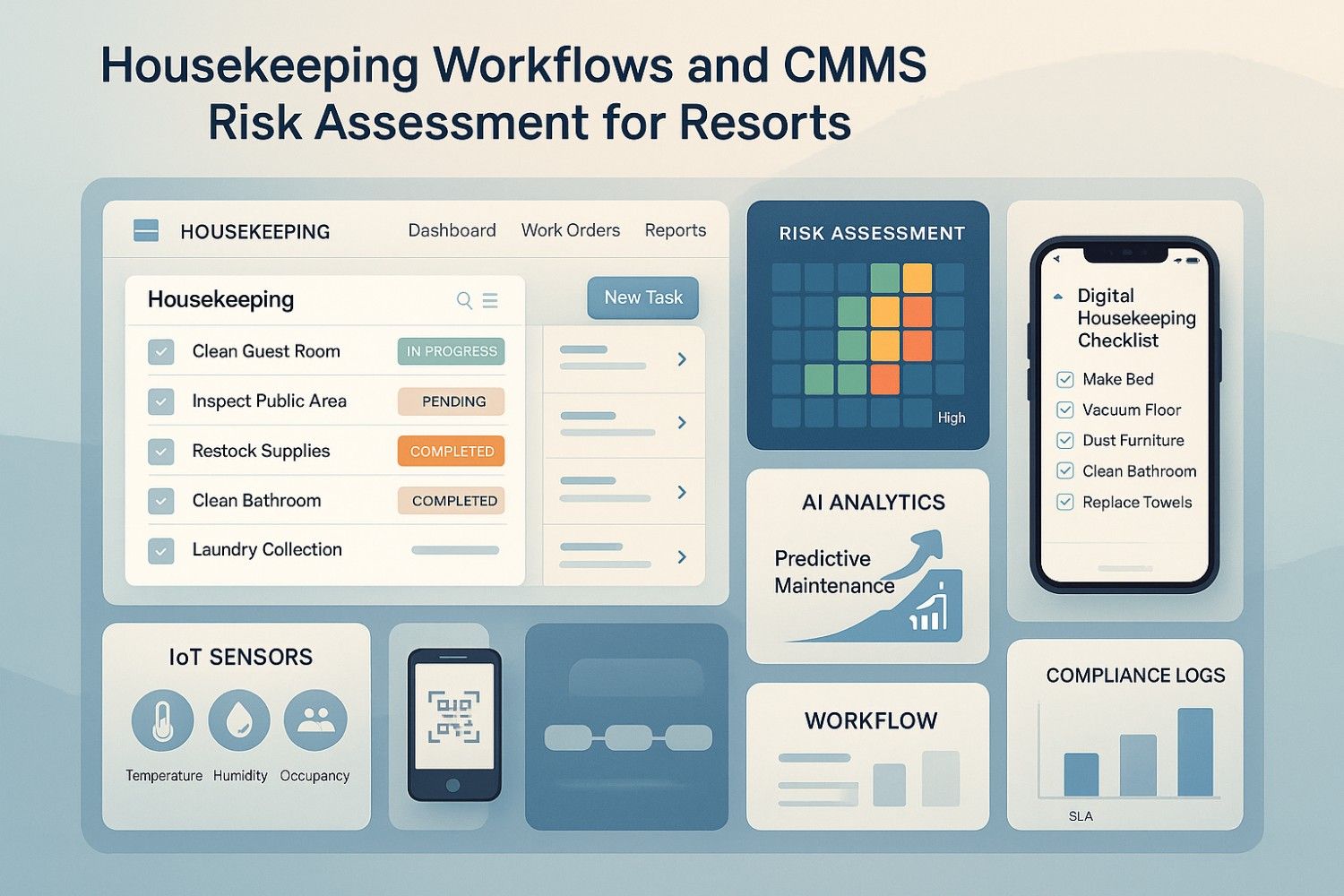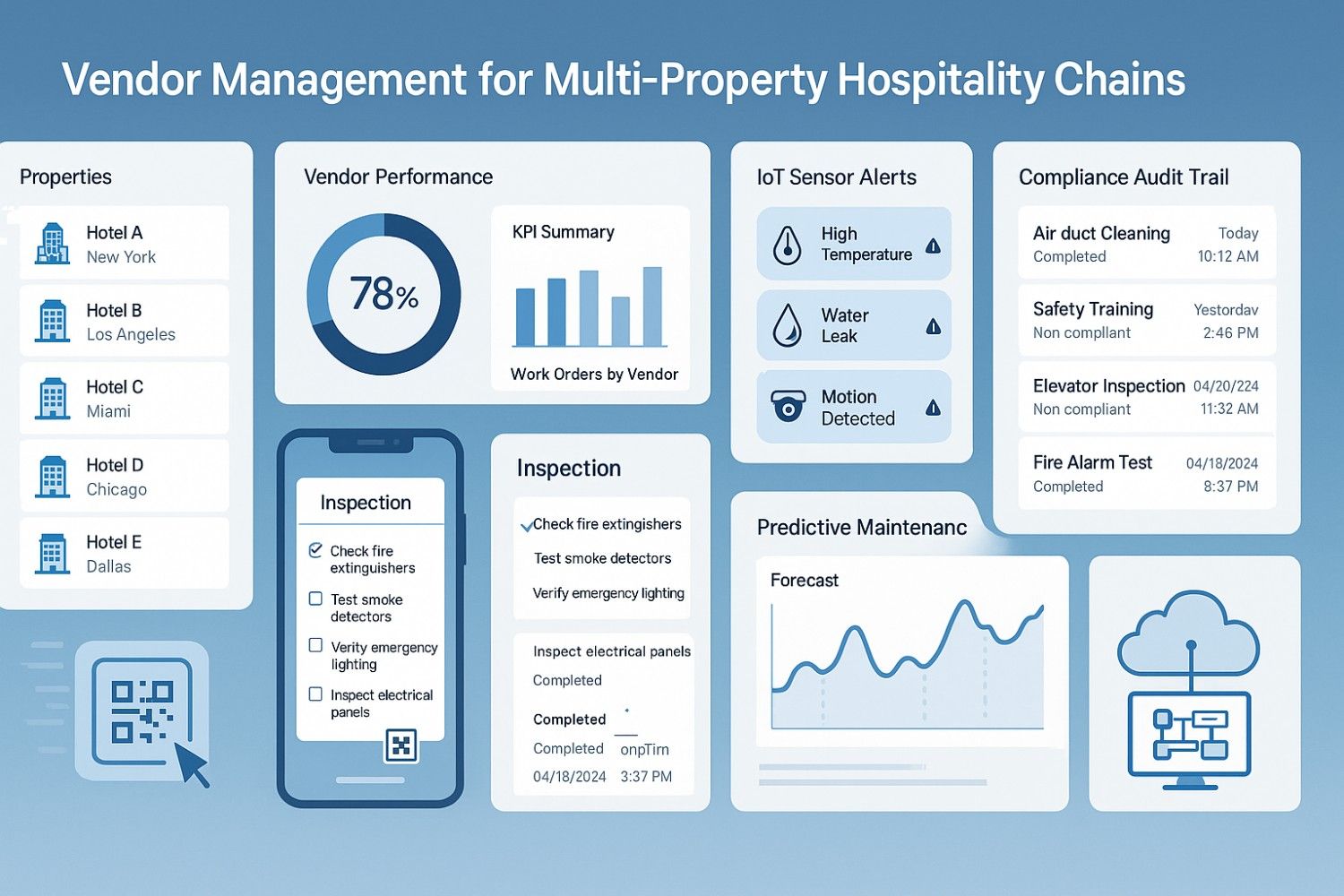The production line grinds to a halt at 2:15 PM on your busiest day of the quarter. A critical motor bearing has seized, taking down an entire manufacturing cell and threatening customer deliveries worth $2.3 million. As your maintenance team scrambles to source replacement parts and coordinate emergency repairs, one question burns in your mind: "Could we have seen this coming?"
The answer, in most cases, is yes. Equipment failures aren't random acts of industrial misfortune—they're predictable events that follow identifiable patterns and provide detectable warning signs. The average manufacturing facility experiences 15-20 major equipment failures annually, each costing $50,000 to $250,000 in direct and indirect expenses. Yet facilities with sophisticated failure analysis programs prevent 70-85% of potential failures through early detection and targeted intervention.
Understanding asset and component failures isn't just about fixing things faster—it's about building predictive intelligence that transforms maintenance from a reactive scramble into a strategic advantage. The difference between industry leaders and laggards often comes down to one simple factor: the ability to read the early warning signs that equipment provides before catastrophic failure occurs.
The Anatomy of Equipment Failures: Understanding What Really Happens
Equipment failures aren't sudden events—they're the final stage of degradation processes that often begin weeks or months before the actual breakdown. Understanding these failure mechanisms provides the foundation for developing effective prevention and early detection strategies that can save millions in avoided downtime and emergency repairs.
Most equipment failures fall into predictable categories, each with distinct characteristics, warning signs, and prevention strategies. By understanding these failure modes, maintenance teams can develop targeted approaches that address specific risks rather than applying generic maintenance practices.
Wear-Out Failures
Gradual degradation from normal use over time
- Bearing wear from friction
- Belt stretching and cracking
- Seal deterioration
- Surface erosion from flow
Fatigue Failures
Stress-induced cracking from repeated loading cycles
- Metal fatigue in shafts
- Weld joint cracking
- Spring failure from cycling
- Foundation settling
Corrosion Failures
Chemical or environmental degradation of materials
- Rust and oxidation
- Chemical attack
- Galvanic corrosion
- Stress corrosion cracking
Overload Failures
Sudden failure from forces exceeding design limits
- Mechanical overload
- Thermal overload
- Electrical overload
- Pressure vessel rupture
Wear-out failures represent 60-70% of all equipment problems and offer the greatest prevention opportunities since they develop gradually over predictable timeframes. These failures typically accelerate when equipment operates outside design parameters or when maintenance practices are inadequate.
Fatigue failures, while less common, often cause the most catastrophic consequences because they can lead to sudden, complete structural failure. These failures develop through microscopic crack initiation and growth that can be detected through proper inspection techniques long before they reach critical size.
The progression from initial degradation to complete failure follows predictable stages that maintenance professionals can learn to recognize. Early stages show subtle changes in vibration patterns, temperature variations, or performance characteristics. Middle stages exhibit more obvious symptoms like unusual noises, visible wear, or measurable performance degradation. Final stages involve rapid acceleration toward complete failure.
Understanding this progression enables maintenance teams to intervene at the optimal time—early enough to prevent failure but not so early that serviceable components are replaced unnecessarily. This timing optimization can reduce maintenance costs by 25-40% while improving equipment reliability.
Root Cause Analysis: Getting to the Heart of Failure Patterns
Surface-level failure analysis—replacing the failed component and returning equipment to service—addresses symptoms rather than causes. Effective root cause analysis digs deeper to understand why failures occur, enabling prevention strategies that address underlying problems rather than just fixing immediate symptoms.
The most effective root cause analysis follows systematic methodologies that examine multiple factors contributing to failure events. Physical causes (component defects, wear, damage) represent only one layer of analysis. Human factors (operating practices, maintenance procedures, training gaps) and systemic issues (design limitations, environmental conditions, organizational factors) often play equally important roles.
Environmental factors contribute to 40-60% of premature equipment failures but are frequently overlooked in failure analysis. Temperature extremes accelerate wear and cause thermal stress, contamination damages seals and bearings, vibration from nearby equipment creates fatigue problems, and humidity enables corrosion that shortens component life.
Hidden Costs of Poor Root Cause Analysis
- Repeat failures from unaddressed root causes
- Escalating damage to related components
- Lost opportunity to prevent similar failures elsewhere
- Higher inventory costs from frequent replacements
- Reduced customer confidence from reliability problems
Maintenance-induced failures represent a particularly important category that receives insufficient attention in many facilities. Poor installation practices, inadequate lubrication, incorrect part specifications, and improper procedures can actually create new failure modes while attempting to fix existing problems.
Effective root cause analysis requires systematic data collection during failure events. Document operating conditions at the time of failure, photograph failed components before removal, measure wear patterns and damage characteristics, and interview operators about any unusual observations preceding the failure.
Pattern recognition becomes increasingly valuable as failure analysis data accumulates over time. Similar failure modes often cluster around specific equipment types, operating conditions, or time periods. These patterns reveal systemic issues that can be addressed through design modifications, procedure changes, or environmental improvements.
The goal of root cause analysis isn't just to understand individual failures but to build organizational knowledge that prevents entire categories of problems. This knowledge accumulation creates competitive advantages that compound over time as facilities become more skilled at recognizing and preventing failure patterns.
Early Detection Strategies: Catching Problems Before They Become Failures
The most cost-effective maintenance strategy focuses on detecting developing problems early enough to address them during planned maintenance windows rather than during emergency breakdowns. Modern detection technologies provide unprecedented visibility into equipment condition, but success requires matching the right monitoring approach to specific failure modes.
Condition monitoring technologies have evolved dramatically in recent years, with new sensors, wireless connectivity, and artificial intelligence capabilities that can detect problems weeks or months before failure occurs. However, the key to success lies in understanding which technologies work best for different types of equipment and failure modes.
Vibration Analysis
Detects bearing problems, misalignment, imbalance, and looseness in rotating equipment
Oil Analysis
Reveals internal wear, contamination, and lubricant degradation in gearboxes and engines
Thermal Imaging
Identifies electrical problems, insulation failures, and friction issues before they cause damage
Ultrasonic Testing
Finds leaks, bearing problems, and electrical arcing that other methods miss
Motor Current Analysis
Detects motor problems, load variations, and mechanical issues in driven equipment
Visual Inspection
Catches obvious problems like leaks, cracks, corrosion, and wear that sensors might miss
Operator-driven inspections remain one of the most cost-effective early detection strategies, particularly when operators are trained to recognize abnormal conditions. Daily inspections can identify 60-70% of developing problems while they're still preventable, at a fraction of the cost of sophisticated monitoring equipment.
Trending and baseline establishment are critical for effective early detection. Many condition monitoring programs fail because they lack baseline data for comparison or don't track trends over time. Equipment that operates normally at 140°F might indicate problems if temperature rises to 160°F, but this requires historical data for context.
Alarm thresholds must be carefully established to balance early warning with false alarms. Overly sensitive thresholds create alarm fatigue that reduces response effectiveness, while conservative thresholds may miss developing problems until they're too advanced for optimal intervention.
Integration between different monitoring technologies provides more complete failure detection coverage than any single approach. Vibration analysis might detect bearing problems, while thermal imaging reveals electrical issues, and oil analysis catches internal wear—creating comprehensive protection against multiple failure modes.
Building a Systematic Failure Prevention Program
Effective failure prevention requires more than just understanding failure modes and detection technologies—it demands systematic implementation of integrated programs that address equipment design, operating practices, maintenance procedures, and organizational capabilities. The most successful facilities treat failure prevention as a core competency rather than just a maintenance activity.
Asset criticality assessment provides the foundation for resource allocation and prevention strategy development. Not all equipment deserves the same level of attention—critical assets that affect safety, production, or customer satisfaction warrant comprehensive monitoring and prevention programs, while non-critical equipment may be managed with basic maintenance or run-to-failure strategies.
Failure Mode and Effects Analysis (FMEA) creates systematic understanding of how equipment can fail and what interventions prevent each failure mode. This analysis guides development of specific prevention strategies rather than generic maintenance practices, ensuring that resources focus on actual risks rather than theoretical concerns.
Preventive maintenance optimization balances prevention effectiveness with resource efficiency. Many facilities either under-maintain (leading to failures) or over-maintain (wasting resources) because they lack data-driven approaches to optimization. Effective programs use failure analysis data to continuously refine maintenance intervals and procedures.
Training and knowledge management ensure that failure prevention capabilities remain strong as personnel change over time. Create documentation that captures lessons learned from failure analysis, develop training programs that build failure recognition skills, and establish mentoring programs that transfer experience from senior to junior staff.
Performance measurement provides feedback for continuous improvement of prevention programs. Track leading indicators like condition monitoring compliance and inspection completion rates alongside lagging indicators like failure frequency and maintenance costs. Use this data to identify program gaps and optimization opportunities.
Continuous improvement processes ensure that prevention programs evolve with changing equipment, operating conditions, and available technologies. Regular program reviews, failure analysis updates, and technology assessments keep prevention strategies aligned with actual needs rather than historical assumptions.
Conclusion
Understanding asset and component failures transforms maintenance from a reactive burden into a strategic capability that drives operational excellence. The facilities that excel in reliability don't just fix problems faster—they prevent 70-85% of potential failures through systematic understanding of failure mechanisms, early detection of developing problems, and targeted intervention strategies.
Success requires recognizing that equipment failures are predictable events that follow identifiable patterns and provide detectable warning signs. By understanding these patterns and implementing appropriate detection and prevention strategies, manufacturing facilities can achieve dramatic improvements in reliability while optimizing maintenance costs.
The path forward involves building organizational capabilities that span technical skills, analytical methods, and systematic approaches to failure prevention. This isn't just about buying better monitoring equipment—it's about developing the knowledge and processes needed to read equipment condition accurately and intervene at optimal times.
The investment in failure understanding pays dividends that extend far beyond avoided breakdowns. Organizations with sophisticated failure analysis capabilities can optimize maintenance strategies, extend equipment life, improve safety performance, and build reliability reputations that create customer loyalty and competitive differentiation.
Remember that failure analysis and prevention represent ongoing capabilities that must evolve with changing equipment, technologies, and operational requirements. The most successful facilities treat this as a continuous learning process that builds knowledge and capabilities over time rather than a one-time implementation project.
Ready to transform your approach to equipment failures and build world-class reliability?
Getting StartedBook a Demo









